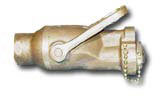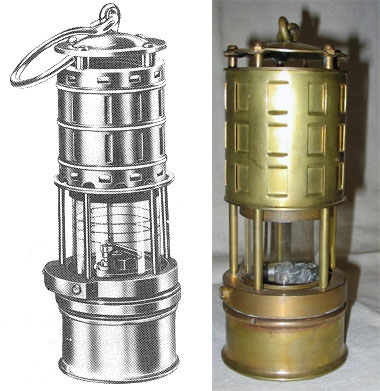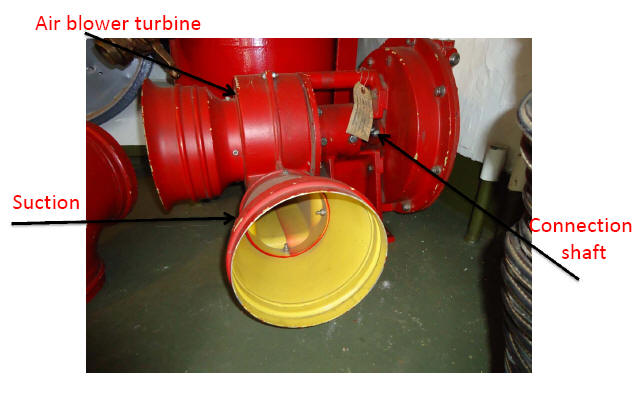| The air turbine driven blower, developed in 1951, was safe
for use in any gaseous atmosphere. It was a pneumatic blower
developed to exhaust air containing explosive vapors. It was
used in fire and post-fire desmoking operations, and during
interior painting operations to remove the toxic fumes. The
blower was also used extensively for gas-free evolutions in
tanks such as those for Navy standard fuel oil (NSFO), diesel
fuel marine (DFM), gasoline, diesel, JP-4 and JP-5 jet fuels,
after Butterworth tank cleaning operations, and occasionally in
voids and ballast tanks. This blower had a capacity of 750 cfm
with about 100 feet of 8-inch hose attached. The compressed air
supplied to the turbine did not exceed 80 psi.
The blower was operated by setting up and connecting the
5/8-inch by 25- or 50-foot rubber air hose to the ship’s low
pressure air system connection using a quick connect/disconnect
fitting. The LP air system held a pressure of 150 psi, except
for tenders and repair ships, which held a pressure of 125 psi.
The blower required at least 125 psi air to operate efficiently.
By positioning the unit directly over a scuttle, manhole, tank
cover or manhole opening, it could remove or supply 750 cfm of
air and provide ventilation. This could also be accomplished by
inserting the 8-inch by 15-foot portable, collapsible vent
ducting in the space. Up to four sections of ducting could be
attached to the blower.
The unit weighed 62 pounds and was painted red. It could be
transported by one person, while two additional personnel
transported the air ducting trunks and air hose. At least two
personnel were required to set up the unit and monitor its
operation. Damage control personnel maintained the air turbine
driven blower.
One air turbine driven blower was on the DC and hull
allowance lists for a repair locker, with one manufacturer
maintenance, parts and repair manual, four lengths of ducting,
one 8-elbow (for angled or off set attachments of air ducting)
and two 25-foot lengths of 5/8-inch rubber air hose. |





